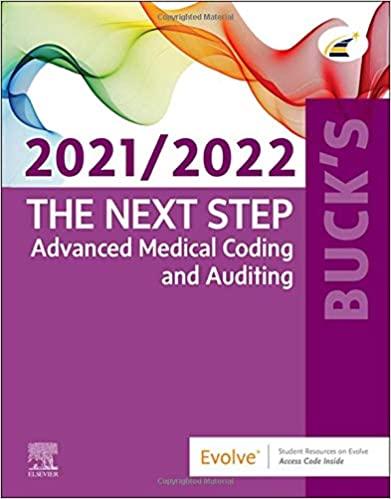Question
Dewqas Limited has prepared the following profit analysis, for the current financial year: Sales (150,000 units) $ 1,230,000 Variable expenses $ 690,000 Contribution margin $
Dewqas Limited has prepared the following profit analysis, for the current financial year:
Sales (150,000 units) $ 1,230,000
Variable expenses $ 690,000
Contribution margin $ 540,000
Fixed expenses $ 204,000
Profit $ 336,000
Management are considering a range of options to improve profitability. These options include reducing the selling price by $0.25 per unit and updating machinery and production methods. If machinery and production methods are updated, fixed expenses will increase by $40,000 per year and variable expenses will decrease by $1.00 per unit. However, management are concerned at the increased risk and changes to the level of operating gearing. If the selling price is reduced by $0.25 per unit, the number of units sold is expected to increase by 5%. There is no reason why management cannot reduce the selling price and update machinery and production at the same time.
Required:
Part-A
1) Calculate the contribution margin per unit, total fixed costs, the breakeven point in units, and total expected profit for all of the possible choices that management can make. Show the results of your calculations in the table in section 1, part A of the template.
2) Complete the following table in section 2, part A of the template, showing expected profit at various sales levels for (i) the current state of operations (no changes) and (ii) the case where machinery and production methods are updated. Show all amounts in whole dollars (do not include cents).
| Sales | 0 | 50,000 | 100,000 | 150,000 | 200,000 |
| Expected profit (no change) | |||||
| Expected profit (machinery & production methods updated) |
Based on your results for part 2 produce a profit-volume chart. Show both cases on the same set of axes. Insert the chart into the space provided (Figure 1) in section 3, part A of the template.
Based on your results to parts 1, 2 and 3, write a brief recommendation to management advising on the recommended course of action (template section 4, part A).
Part-B
Management are considering a project to buy and operate a major item of equipment. Your boss is extremely enthusiastic about the project, arguing that (i) it has a very high rate of return and acceptable payback period, and (ii) it will definitely add to shareholder value. The equipment costs $300,000, is anticipated to be sold at the end of year 5 for $20,000, and will be depreciated straight line over the five-year period. The equipment will be used to manufacture a new type of electrical switch which will be sold at a price of $4.50 per unit. Expenses associated with this project other than depreciation can be assumed to be 60% of the sales revenue. The relevant discount rate is 13.0% and can be assumed to be the hurdle rate for both the accounting rate of return and the internal rate of return. The sales forecast is given by the following table:
| Years | Sales (units) |
| 1 | 27,000 |
| 2 | 37,000 |
| 3 | 47,000 |
| 4 | 57,000 |
| 5 | 67,000 |
Required:
1)Calculate the projected yearly profit and operating cash flows. Ensure that your measure of profit is relevant for any appraisal measure as discussed in the lectures/textbook. Present your analysis in the table in section 1, Part B of the template.
2)Prepare a table showing ALL the project's net cash flows, excluding working capital requirements. Present your analysis in the table in section 2, Part B of the template.
3)Calculate the accounting rate of return, and show your answer as a percentage with 2 decimal places (e.g. 12.34%) (template section 3, Part B).
4)Prepare a table of cumulative cash flows suitable for calculating the payback period, and calculate the payback period (template section 4, Part B).
5)What can you conclude about the project and about the statements made by your boss, based solely on the project's ARR and payback period? Enter your response in template section 5, Part B.
6)Prepare a table of cash flows , discount factors and present values as relevant for calculation of the net present value (NPV), and calculate the project's NPV (template section 6, Part B).
7)Calculate the project's internal rate of return (IRR), and show your answer as a percentage with 2 decimal places (e.g. 12.34%) (template section 7, Part B).
8)Assume that customers take one month to pay, the project requires inventory of $15,000 to be held, that accounts payable attributable to the project has a permanent balance of $10,000, and that working capital requirements are in place at the start of each year. Prepare a table to show the effect of these considerations on the project's cash flows (template section 8, Part B)
9)Comment, in general terms, about how working capital requirements affect the cash flows and the NPV of the project (template section 9, Part B).
10)Based on your analysis, what are your recommendations regarding this project? Do you agree with the comments made by your boss? Why or why not? (template section 10, Part B)
Step by Step Solution
There are 3 Steps involved in it
Step: 1

Get Instant Access to Expert-Tailored Solutions
See step-by-step solutions with expert insights and AI powered tools for academic success
Step: 2

Step: 3

Ace Your Homework with AI
Get the answers you need in no time with our AI-driven, step-by-step assistance
Get Started


